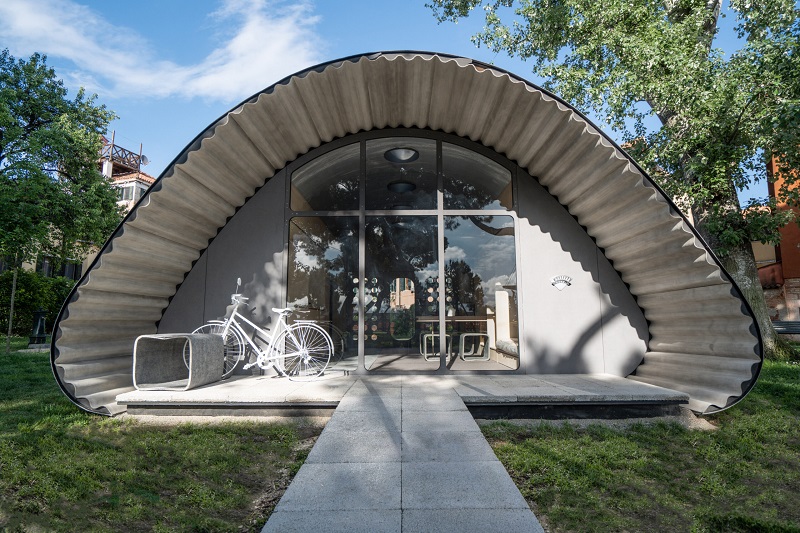ISABEL RUBIO ARROYO | Tungsteno
According to the UN Relief and Works Agency for Palestine Refugees in the Near East (UNRWA), there are 5.9 million registered Palestine refugees worldwide, a situation that may be exacerbated by the war between Israel and Hamas. The research project "Essential Homes Research", led by the Norman Foster Foundation and the building material company Holcim, aims to design a shelter for people who, because of this or other conflicts or natural disasters, are forced to live under tarpaulins with movable walls. Their solution: replace the classic tents with an environmentally friendly concrete structure with a curved roof.
From tents to a sturdy shelter
"Natural and man-made disasters create a continuous exodus of people seeking instant shelter," says Norman Foster, chairman of the foundation that bears his name. At the end of 2021, the number of forcibly displaced people worldwide reached more than 89.3 million, according to the United Nations. Of these, 27.1 million were refugees.
The project began with a workshop on refugee housing run by Holcim, Foster told the Financial Times: "The students challenged the experts who represented the humanitarian bodies which provide shelters, which is essentially tented accommodation. They are temporary but the reality is that families can be there for decades," Foster says.
While the lifespan of a tent may be as short as six months, families stay in emergency accommodation for an average of 17 years, the same newspaper reports, citing UN data. "We wanted to see how we could do this sustainably, not making a shelter but a home, something that would last and not be disposable. Could we minimise its carbon footprint, increase its resilience and reuse materials?" says Edelio Bermejo, head of research and development at Holcim.
The aim of the Norman Foster Foundation is to design "homes, not temporary shelters". Credit: Dezeen
A shell that rolls up like a carpet
The solution they proposed was to build a robust concrete shelter. The structure is made of low-carbon rollable concrete sheets that "serve as an outer shell and provide physical security". Bermejo says it is like "a structural shell that is rolled up like a carpet". By simply adding water, the shell hardens and becomes completely rigid within 24 hours. Its base is made from recycled construction materials and has "energy-efficient insulation systems" to ensure thermal and acoustic comfort.
Holcim says the shelter has a 70% lower carbon dioxide footprint compared to conventional housing. Inside, it will have beds, a dining/work table and several seats, as well as a shower, toilet and washbasin. The project is at a pioneering stage. For the time being, its promoters showcased a full-scale model of the shelter at this year’s Venice Architecture Biennale. It remains to be seen whether this type of structure will ever be built on a large scale to house refugees.
The shelter is made of roll-up concrete sheets. Credit: Norman Foster Foundation
A shelter that takes just hours to assemble
Other companies and organisations have also tried to create shelters for people who find themselves outside their home country due to fear of persecution, conflict, generalised violence or other circumstances. One such example is the Better Shelter project, in which the IKEA Foundation is involved, which has created a 17.5 square metre shelter that can accommodate up to five people. As is often the case with IKEA furniture, in this case all the pieces are shipped flat-packed. "It can be set up by four people in hours, without tools," says the foundation, which has shared a short video of the shelter being assembled in three hours.
Better Shelter's relief unit is intended to house up to five people. Credit: Better Shelter
Other researchers are exploring how 3D concrete printing can help build durable shelters. Such structures are a vital survival mechanism in times of crisis or displacement, according to the United Nations High Commissioner for Refugees (UNHCR). "It is also key to restoring personal security, self-reliance and dignity," adds the agency, noting that on cold nights or hot days, a shelter can mean the difference between life and death.
Tungsteno is a journalism laboratory to scan the essence of innovation.
